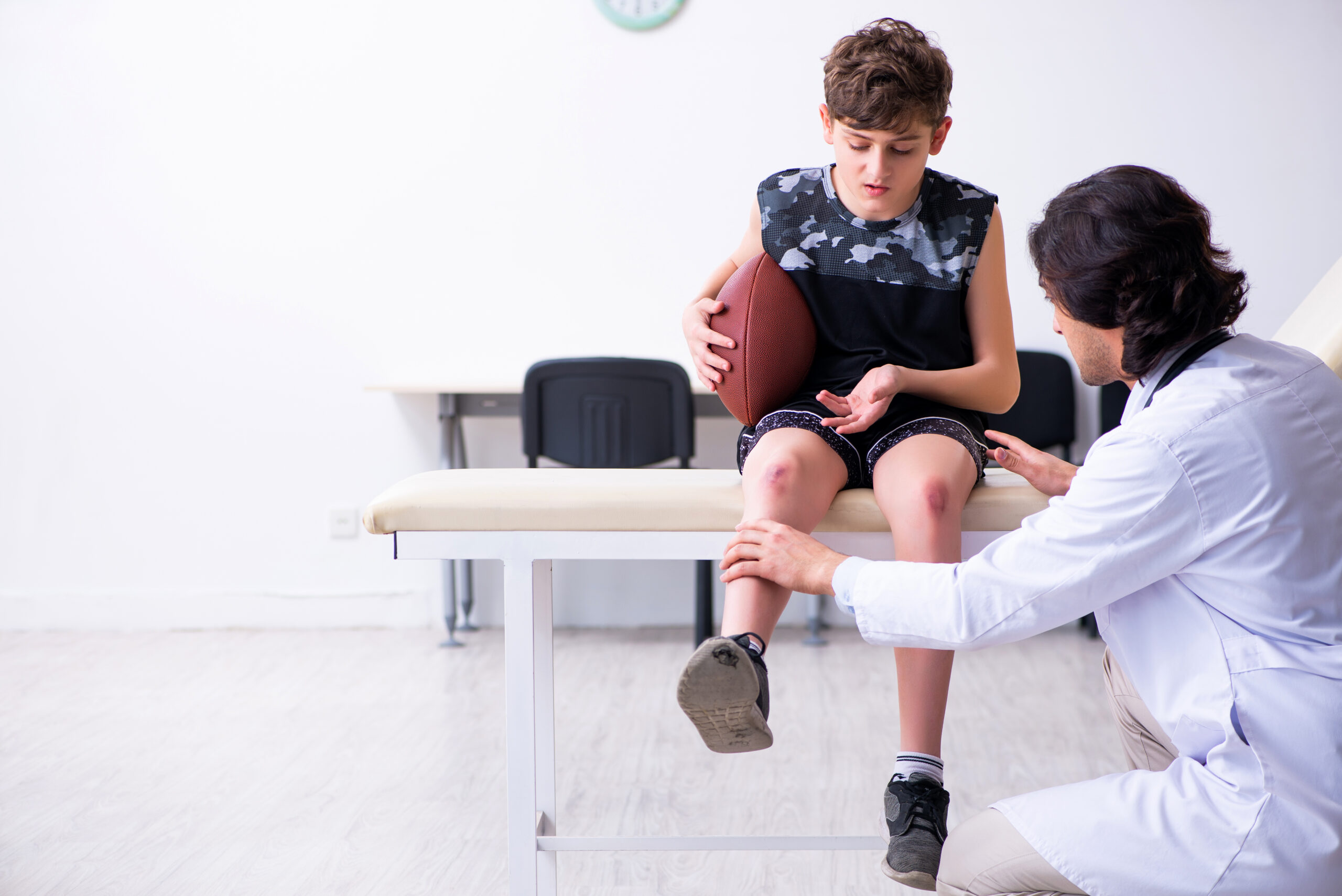Whether through injury or the physical stress of engaging in sports, athletes endure a significant amount of pain. They end up having to learn various pain management techniques to maintain a high level of performance.
Managing pain has become a focal area of sports medicine. However, like many Americans, athletes can turn to opioids to manage their pain, and research shows that approximately 14.3 million people abuse prescription opioids. However, the addictive nature of opioids makes them a dangerous alternative that can end your career.
Sports medicine has always focused on the treatment and rehabilitation of injuries sustained. But now you can unlock new ways and secrets to managing athletic pain. Read on as we discuss various effective sports medicine for managing pain and even understand preventive care strategies.
Pain Management Techniques
Athletes have a special relationship with pain in that they learn how to get used to it and have a higher tolerance. However, your performance can be severely limited if you’re in pain.
Below are a few pain management techniques you can employ as an athlete:
- Cold therapy
- Electrical Stimulation
- Heat therapy
- Massage therapy
Cold Therapy
Ice is a common pain management technique that involves applying an ice pack to the affected area for about 20 minutes. Cold therapy can alleviate pain by reducing swelling, numbing the affected area, and slowing blood flow if bleeding occurs.
This therapy is effective in the first 48 hours after you notice you are in pain. Applying ice is also advisable after undergoing medical procedures such as a surgical knee replacement. A foot and ankle specialist can help you understand how to use the therapy safely to avoid frostbite.
Electrical Stimulation
The most common electrical stimulation method used in sports medicine is Transcutaneous Electrical Nerve Stimulation (TENS). The technique uses electrical currents to stimulate the affected area and minimize pain. TENS is a viable option only if a sports medicine specialist is present.
Heat Therapy
Athletes can use heating pads, hot baths, or towels to address their pain. Heat therapy can help increase blood flow to the affected muscles, minimize stiffness, and promote relaxation.
Heat therapy is helpful for athletes, such as footballers, who must perform regularly. If you sustain an injury, don’t use heat therapy for at least two days, as it may exacerbate swelling.
Massage Therapy
Massage therapy is one of the rehabilitation exercises that doesn’t involve taking pills. Getting a massage can help you relax, eliminate muscle tension, and promote circulation to your extremities.
Massage therapies are also effective in supporting your recovery process after an injury or medical procedure. Massages are a form of preventive care for athletes because they can help minimize the risk of injury after intense physical exertion.
Physical Therapy
Physical therapy can facilitate pain alleviation and athletic performance enhancement. A physical therapist can help you develop an exercise program that meets your needs and avoids injury.
Physical therapy is also vital to understanding your body’s response to pain. Not all pain is bad, and it’s normal to experience uncomfortable sensations when working out. Simple physical exercises such as stretching provide a great way to:
- Open up your muscles
- Improve functionality
- Promote flexibility
When in pain, physical therapy can help you recover faster and ensure you return to play. Work with a physical therapist to understand what exercises can help you manage, prevent, and recover from pain.
Pharmacological Pain Management in Sports Medicine
Research by the National Library of Medicine shows athletes experience more pain than the general public. Although it’s not a great option, drugs are sometimes the only choice suitable for pain management.
As an athlete, you need a medical diagnosis to get prescription medication for pain. The initial medication recommended by physicians is Nonsteroidal Anti-inflammatory Drugs (NSAIDs).
You should take NSAIDs only when necessary and in strict adherence to the prescription. Other drugs to address chronic pain include:
- Anticonvulsants for example, pregabalin
- Lidocaine patches
- Capsaicin 8% patches
Pharmacological interventions for pain can involve narcotic drugs if the pain is very severe. The use of corticosteroid injections is also common for fast pain relief. Your physician may recommend getting viscosupplementation injections after a surgical knee replacement or injury.
Trending Pain Management Techniques
Sports medicine continuously develops new ways for athletes to manage their pain better. One of the leading trending pain management methods is using stem cell injections. Doctors are now injecting stem cells into athletes to heal faster and promote regeneration.
Like stem cell injections, athletes can now get injected with Platelet-Rich Plasma (PRP) to enhance their recovery after an injury. Unconventional methods such as acupuncture also relieve pain by targeting specific body regions.
The use of more than one approach is also becoming common in sports injury treatment. Always consult a trained professional, such as an orthopedic surgeon, to understand the efficacy of an unfamiliar pain management approach.
Rest and Immobilization
Immediate immobilization of the affected area can help manage the athlete’s discomfort. Musculoskeletal injuries often feel better after getting immobilized. Some of the tools used for immobilization are:
- Slings
- Braces
- Casts
- Splints
Some individuals are used to pushing themselves over the limit and don’t know when to take a break. Sometimes, rest may be the only thing you need if you’re in pain. Relaxing at home and limiting physical exertion for a day or two can help you recover.
Rest is also a core part of the RICE protocol for pain management. Other simple methods to manage pain include:
- Keeping the affected body part elevated
- Using a bandage to keep pressure on the injured limb
Remember to consult orthopedic specialists such as hip replacement surgeons or ACL surgeons to help you develop a rehabilitation plan that minimizes the risk of serious injury.
Enhance Your Performance Today
Learning how to manage pain is critical to a successful career as an athlete. While some level of pain is normal, experiencing chronic or severe pain is a sign you need help.
Taking over-the-counter medication is a favorite go-to for most athletes. However, the risk of dependency or taking banned substances is too significant to ignore.
The best course of action is to consult one of our sports medicine specialists with a background in orthopedics. Contact us today, and we’ll help you manage your pain effectively while safeguarding your future by developing a preventive care strategy.
Author: writers-amwn
Related Articles
Every year, there are between 100,000 and 200,000 ACL tears in the United States, making it the most commonly injured knee ligament. This type of [...]
In addition to getting adequate sleep and rest, one of the key factors in promoting orthopedic health is ensuring that your spine stays in a [...]
Common Football Injuries: Prevention, Treatment, and Recovery Football is one of the most physically demanding sports, requiring strength, agility, endurance, and split-second decision-making. While thrilling [...]
The American College of Rheumatology estimates that about 790,000 knee replacements occur in the United States annually. Post-knee surgery care is vital to helping you [...]
Foot injuries are one of the most common injuries that lead to a workers' compensation claim. Together, the human foot and ankle put in some [...]
"Hi everyone! My name is Mary Kay Carter, and I wanted to share a story that's really close to my heart. In late November 2022, [...]
Back to School: The Importance of Orthopedic Health for Students As summer draws to a close, students and parents alike start preparing for the new [...]
The 2022 American Joint Replacement Registry Annual Report compiled 2.8 million hip and knee procedures across all 50 states. It's an increase of 14% from [...]
When you have a problem with your foot or ankle that requires medical attention, who do you see for treatment — an orthopedist or a podiatrist? Many people think a podiatrist is the same as an orthopedist, but there are several significant differences betw
When you have a problem with your foot or ankle that requires medical attention, who do you see for treatment — an orthopedist or a podiatrist? Many people think a podiatrist is the same as an orthopedist, but there are several significant differences betw











